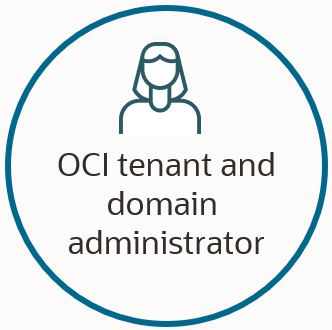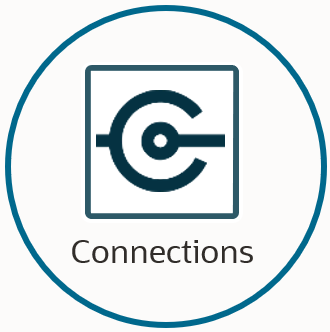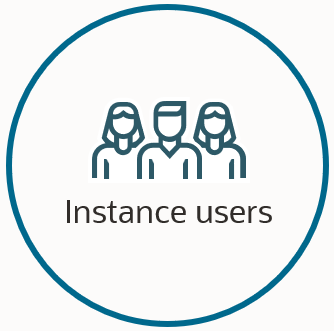Target Systems: Control Connection Access
Outbound traffic, also called egress traffic, originates in an Oracle Integration instance. Outbound traffic goes to a target system, which is a service that an integration invokes, or calls. All outbound traffic from an integration is routed through an adapter. Understand your responsibilities for controlling access to target systems.
Integration developers must configure connections based on the target system's requirements. The target system is responsible for authenticating and authorizing requests to it. To learn how to connect to a target system, refer to the documentation for the target system.
On This Page
Access at a Glance
| Area | More information |
|---|---|
|
Connections that need access |
|
|
Authentication and authorization methods: Its own methods |
Each target system specifies one or more own authentication and authorization method(s). The adapter for the target system supports at least one authentication and authorization method. Additionally, technology-specific adapters (REST, SOAP, and FTP) support one or more authentication and authorization methods. For details about the methods that each target system supports, see the documentation for the target system. For details about the methods that each adapter supports, see the adapter documentation. Oracle provides a guide for using each adapter. See Configure Connection Properties and Security Properties in Using Integrations in Oracle Integration 3 for links to all adapter guides. |
How to Control Access
| Security goal | Owner | More information |
|---|---|---|
|
When creating an integration, ensure that the credentials that access each target application are configured appropriately |
Instance users with the ServiceDeveloper role |
Ensure that the credentials that you configure in a connection can authenticate and authorize successfully in the target application. For example, the credentials must have valid roles to perform the required tasks in the target system. For applications with adapters Oracle Integration connects to other applications and resources using adapters. When an integration developer designs an integration, the developer configures this access by defining a trigger connection that is based on an adapter. Most adapters require either OAuth tokens or signature-based authentication to authenticate a resource's access to the Oracle Integration instance. For applications without adapters When an adapter isn't available for an application that needs to access your Oracle Integration instance, Oracle recommends creating connections using the REST Adapter or the SOAP Adapter and providing an OAuth token. You can also build your own adapter using the Rapid Adapter Builder. See What Is the Rapid Adapter Builder? in Using the Rapid Adapter Builder with Oracle Integration 3. See the adapter documentation Oracle provides a guide for using each adapter. See Configure Connection Properties and Security Properties in Using Integrations in Oracle Integration 3 for links to all adapter guides. |
|
Write IAM (identity and access management) policies that give Oracle Integration access to the resources |
 |
Several actions allow you to access Oracle Cloud Infrastructure resources directly from an integration. To use these actions, you must complete several prerequisite tasks, including writing IAM policies that grant the Oracle Integration instance access to the resources and creating dynamic groups. See the following in Using Integrations in Oracle Integration 3: |

